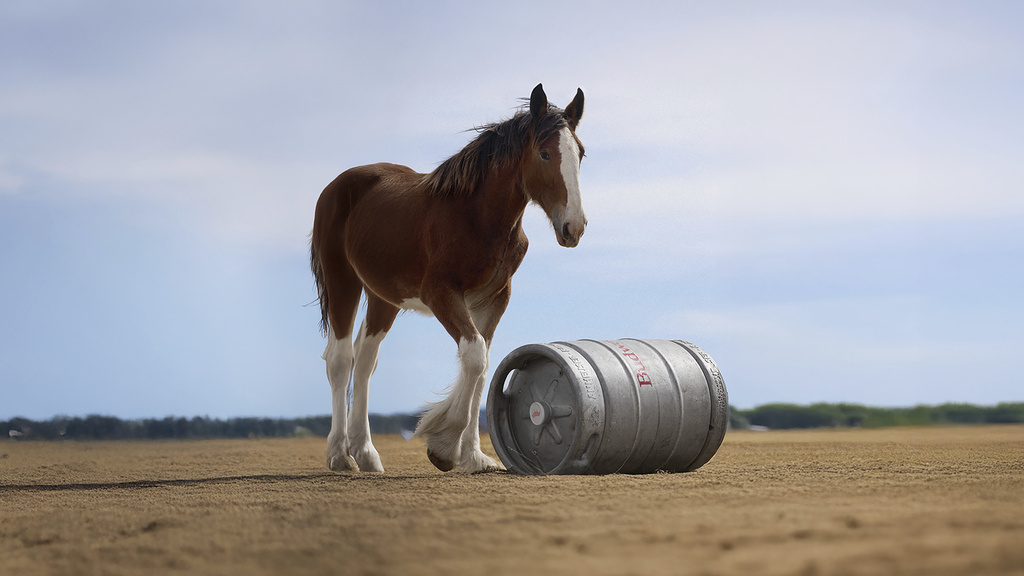Pixar’s newest film “Turning Red” has ignited a debate amongst audiences as they wonder whether this quirky animated film is just weird enough to be worth watching or not. Released to Disney+ on March 11, the film follows a 13-year-old Chinese Canadian girl named Mei as she traverses the bridge between childhood and adulthood: growing up.
Director Domee Shi, who also directed the award-winning short film ‘Bao’ in 2018, did not shy from addressing seemingly awkward topics in her new film.
Spinnaker reporters wrote the following two reviews as they too attempt to answer one question: Is “Turning Red” worthy of the praise that supporters have heaped on it, or not?
Shattering stereotypes with Pixar’s “Turning Red”
Julia Croston, Managing Editor
Everything changes for Mei Lee, a 13-year-old girl from Toronto when she suddenly transforms into a giant red panda. Ming Lee, Mei’s mother, reveals this transformation is inherited from their Chinese ancestors and passed down through generations of women in their family. The transformation is a result of strong emotion and coincides with Mei’s entrance into puberty.
Directed and co-written by Domee Shi, “Turning Red” is a cute, relatable story that keeps Pixar on the right track for representation.
The movie hosts a strong cast of female characters, and Mei centers herself amongst them. She has three close friends: Miriam, Abby and Priya. It is refreshing to see a group of diverse female friends who pass the Bechdel test with flying colors (there are at least two, named, female characters that talk to one another and not just about a man).
A large portion of the movie analyzes the relationships between mothers and daughters, and this becomes something that most women can relate to. While a common trope, “Turning Red” adds something new to the conversation. Semi-autobiographically, Shi represents her own cultural heritage and life experiences as a Chinese-Canadian.
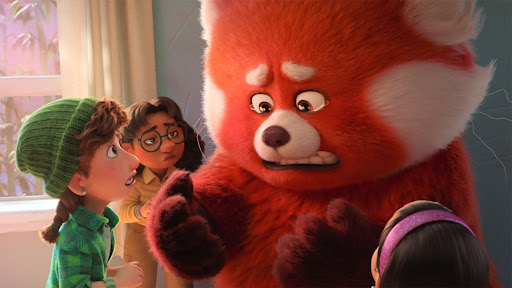
Shi demonstrates the relationship between mother and daughter while balancing both perspectives. Mei has to deal with the pressure from her mother to be perfect while Ming just wants to be a part of her daughter’s life and protect her.
Mei and Ming embody what daughters inherit from their mothers. With Ming’s mother also represented, the audience can see three generations all connected by a shared experience of being a woman and dealing with the pressures of living up to motherly expectations. More literally, the women in Mei’s family are all connected by their inherited panda, which they all got rid of and concealed by participating in a special red moon ceremony.
In a particular moment, Ming receives a call from her mother and is instantly concerned because she does not want to face her judgment. This mirrors Ming’s relationship with Mei. Mei witnessed the complicated relationship between her mother and grandmother, so she chose to keep the panda and break the cycle of disconnection to maintain their loving relationship. By the end, Ming learns to respect her daughter’s decisions and interests, and Mei learns that her mother only wants to protect her.
“Turning Red” teaches children, primarily young girls, not to be ashamed of their interests. This is seen most prominently with Mei’s obsession with the fictional boyband, 4*Town. Stereotypically, teenage girls have been criticized for having an obsession over something they connect with and love by being defined as “cringe” and “a waste of time.” Shattering that misogynistic belief, this film demands audiences view things differently to support young girls, and all teens, in their interests, no matter how unimportant or “cringy” society may view them.
The panda itself could be interpreted as an allegory for a number of things. The movie offers one main explanation at the end when Mei speaks to the audience to tell them not to hide the parts of themselves they are ashamed of because all humans have embarrassing traits. This positive message can teach a younger audience to accept themselves for who they are as they come to age and deal with the awkwardness of puberty.
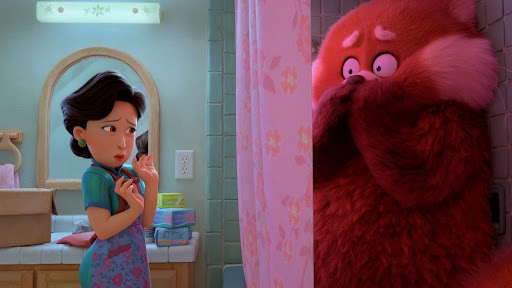
Another interpretation correlates with menstruation, a topic the movie does not shy away from. When Mei first transforms into the panda, Ming believes her daughter started her period and offers her pads and a multitude of comforts. Through this, the movie helps destigmatize periods while accurately portraying the typical embarrassing reaction of a mother. The panda could represent a young girl starting her period and learning to embrace womanhood without embarrassment since this is a normal biological aspect of life.
Finally, the panda also plays with the notion of societal expectations for women. In rejecting the panda, Mei would be rejecting the childlike part of herself and forced into the expectation of, similar to the message to embrace even what is considered embarrassing. The other women in her family had to conceal this part of their identity when they were younger. The panda transformation is set off by strong emotions, and being “too emotional” is often stereotyped to women. So, with Mei’s internal struggle of whether to accept her panda, she struggles to break free from the confining expectations of a patriarchal society.

Spinnaker rates this film 4.5 out of 5 Spinnaker Sails.
“Turning Red”: An overhyped mediocrity
Nathan Turoff, Features Editor
The premise of a coming-of-age story, set in relatively modern-day Canada, was intriguing even from its first trailer. However, this expectation was short-lived. After watching the film, I found myself disappointed and seeking more from it than the plot and characters offered.
Pixar’s latest film under this categorization, “Turning Red,” follows a 13-year-girl named Mei who unlocks a Hulk-like ability to morph into a giant red panda whenever she experiences strong emotions. A common complaint of modern animated films is that they “pander to children” and focus on a very limited demographic with little to no appeal for adults (at least over the age of 21). I typically would expect this with studios like Illumination, but I certainly did not expect it from this studio.
Perhaps, the problem with these newer, non-sequel films is that they are burdened by the precedent set by gold-standard legacies like “Inside Out,” “Ratatouille” and the “Toy Story” films. Pixar, with its seemingly cosmic-wide library of influential and impactful films, often finds itself pressed to top their previous successes when it’s just impossible.
“Turning Red” is the most predictable animated film I have seen from Pixar, rivaled only by “The Good Dinosaur.” Its story and characters felt incredibly cliché and far too similar to other, better films in Pixar’s past.
Past trailers gave the implication that the plot would follow Mei as she attempted to control her transformation. The plot point was quickly resolved (something I appreciated) which gave filmmakers the opportunity to further explore the world, its characters and create a unique story. However, this is where the positives end as the plot becomes almost impossibly more predictable from there.
[Eds Note: The following contains spoilers for “Turning Red”]
The film’s major conflict ended up being between Mei and her controlling mother, Ming. The hiccup of Ming becoming a giant panda and destroying everything, while an admittedly nice homage to monsters like Godzilla, was unsatisfying. The ending of the movie does draw attention to the fact that she owes hundreds of millions of dollars in repairs, which feels appropriate from a fiscal standpoint, but it’s only used for a quick gag.
Toronto is the most populous city in all of Canada, not a model or some mimic, but a real-life city. By setting the movie in a real city, it sets the precedent of real consequences, then almost completely ignores them. However, at the end of the day, this is still an animated film directed at entire families.
The idea of excessive damage to public areas is already a recurring issue in many modern films that portray massive realism, especially superhero films. However, by virtue of being an animated film, it isn’t too big of a problem in this film.
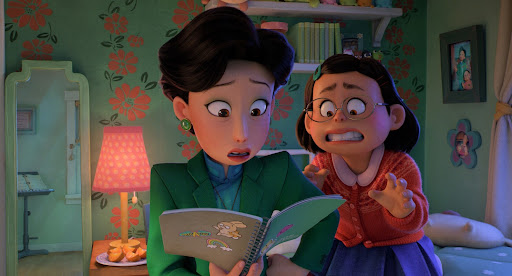
The pacing of this movie leads to these recurring issues of characters’ actions not having just consequences. Another instance that remains incredibly unresolved is when Mei nearly assaults Tyler, the young bully, but the movie is very quick to write it off and never addresses it a second time or properly remedies it.
Pixar is more than capable of writing stories with characters that face consequences for their poor actions and learn from them, and it hurts that this skill isn’t shown here.
Take “Brave,” a movie where the main character Merida accidentally turns her mother into a bear and is forced to face the ramifications of that choice throughout the movie. There are consequences: She is forced to save her mother in her bear form, nearly losing her mother to her bear-hating father, or the transformation becoming permanent. Those consequences were just and filmmakers make it feel as if the character has learned something. This is not the case with “Turning Red” at all.
Mei’s decision to keep the panda didn’t feel too justified. She almost killed someone, and she saw her mother’s panda cause mayhem. She already had friends beforehand but just because she had a fun time raising money from her classmates, she wants to keep it. Mei herself even acknowledges that she might be making the wrong decision, but the movie doesn’t answer if she’s right or wrong. It’s okay if a movie is left open to interpretation, but when the potentially negative consequences of a decision are made far more evident than the potentially positive consequences, some amount of solid closure for the audience might be warranted.
The characters were incredibly simple and nothing we haven’t seen from Pixar before. Mei is fine; she’s quirky, relatable and fun to watch. I really enjoyed her fourth wall breaks at the beginning and end, as it helped bring the film full circle. Her friends, by contrast, were incredibly one-sided and her mother is a very cliche character as a whole.
For her friends, it seems as if the writers picked one notable trait for each one and then called it quits. There’s the tomboy, the hyper one and the stoic one. I really do like the nature of them all wearing a different color in their clothing. It was a nice and clever visual. I just wish their personalities were as fleshed out as their designs.
As hinted at previously, Tyler, the school bully, was totally ripped off by the poor pacing of the movie. He spent the first half of the movie unnecessarily harassing Mei at school, and she comes within literal inches of seriously hurting him. Mei and her friends see him at the pop concert, and he’s immediately indoctrinated into the friend group with a handshake as if all the things that happened previously in the movie didn’t exist at all. The movie’s poor pacing and the aforementioned lack of just consequences combined make Tyler’s arc have a forced conclusion.
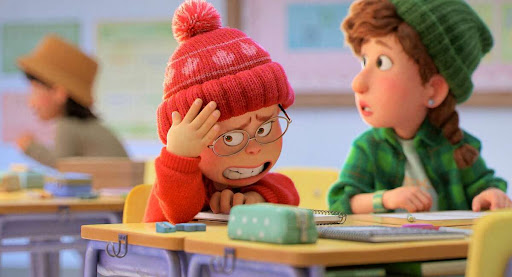
The rest of Mei’s family wasn’t too exceptional. The aunts served no crucial plot purpose until the ending fight with Ming’s panda, and the movie made no efforts to make them stand out from each other. Ming’s mother, Wu, is just Ming’s personality but older and slightly mellowed out, but that does seem appropriate. Mei’s father Jin, while wholesome, was still predictable to watch, and his role in the story was obvious from the second we saw him interacting with his wife.
Ming was by far the most underdeveloped character in the entire movie and — as the primary antagonist— the whole story struggles. She is immediately established as a controlling character, but the movie does little to help her feel distinct from the countless other characters with similar traits.
The controlling family member trope has been done several times before (take “Finding Nemo,” “Encanto” and “Brave”). Mei’s mother brings nothing new to the table, and unlike the characters in the previously mentioned films, she rarely comes across as relatable or understandable, so by the end of the movie where she is portrayed as a victim, it’s hard to empathize with her.
The scene with Ming confronting the store clerk was very unrealistic, even by the standards of an animated Pixar film, and it immediately made Ming unsympathetic to me. The movie doesn’t take many efforts to make her more likable after that. Throughout the movie, she chastises Mei’s music and trash-talks her friends, in addition to her protectiveness.
After her giant panda is subdued, it is revealed that Ming had issues with her own mother, even scratching her. This was not properly built up. Sure, there was awkwardness involved, but that hardly felt unordinary given the circumstances of the transformations. The only indication of friction between them was the visual of Wu’s scar but that was nowhere near enough foreshadowing.
The humor of the film feels like a massive bag of missed potential. Most of this film’s humor centers on the kids. The problem with this is nearly all of the scenes with Mei, her friends and classmates made me wince, and on paper, that certainly makes sense. This film is based on the experiences of the director and writer, Domee Shi, who grew up in Canada during this time period. When we, as adults, tend to look back on our childhood and the choices we made, we often cringe at the thoughts of how we were. I think that aspect was incorporated into the child characters, but I think they dropped the ball with it. Almost every single scene featuring just Mei and her friends felt very hard to watch, and I don’t think the filmmakers intended for them to come off that way.
There is one element of the film’s humor that definitely works (especially with the kids) and that is with the facial expressions. The film was filled with exaggerated facial expressions, in a style that was very indicative of Anime, and I really enjoyed it. The facial expressions, coupled with the artistic design of her friends, led to the children in this film feeling very expressive but with flat personalities.
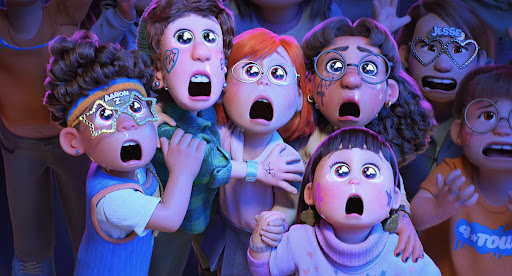
There are many elements of this film that I adored; the direction and artistic style of this film was nothing short of pure artistry. Mei’s friends all wearing clothing of a specific color was a very nice visual, and much of the film’s settings feel interesting to the eye. Toronto looks realistic, and the scenes in the spirit world were a nice, calm change of pace in comparison to the high-speed friction of the city. My favorite scene was when Mei is running along rooftops transforming back and forth on her way to the concert. The dark sky, coupled with Mei’s red color themes, and occasionally slow-motion shots leads to a sequence that stands toe-to-toe with some of Pixar’s finest.
Clearly right now in her career, Shi is a fantastic director and animator, but her writing skills leave much to be desired. I’m very interested to see where her career will go from here.
This film is beautifully animated and directed, but I cannot ignore its clear shortcomings in the plot, characters, and pacing. It feels like its critical reputation is slightly unearned, as, writing-wise, it is one of the blandest Pixar films I’ve seen. This film is designed to appeal to all audiences, so not everyone will feel the same about it, so it’s very crucial to always watch a film for yourself before forming your own opinions.

Spinnaker rates this film 3 out of 5 Spinnaker Sails.
___
For more information or news tips, or if you see an error in this story or have any compliments or concerns, contact editor@unfspinnaker.com.




